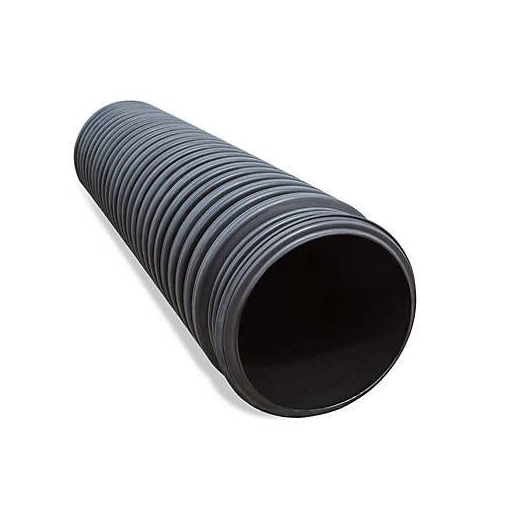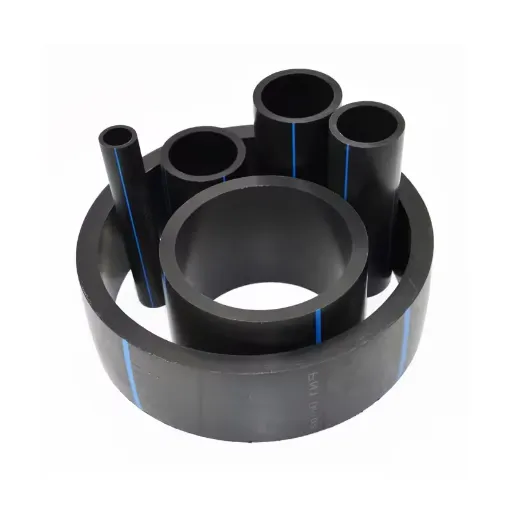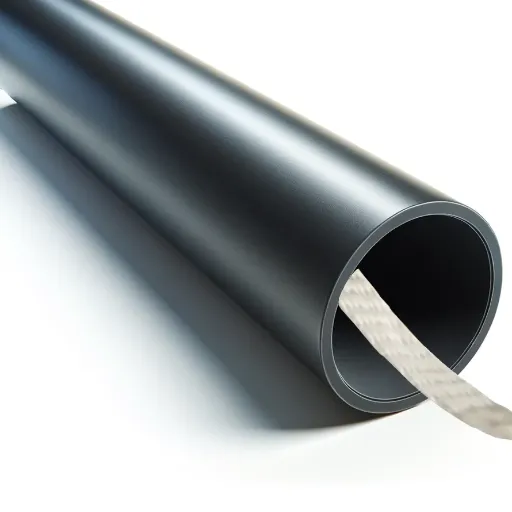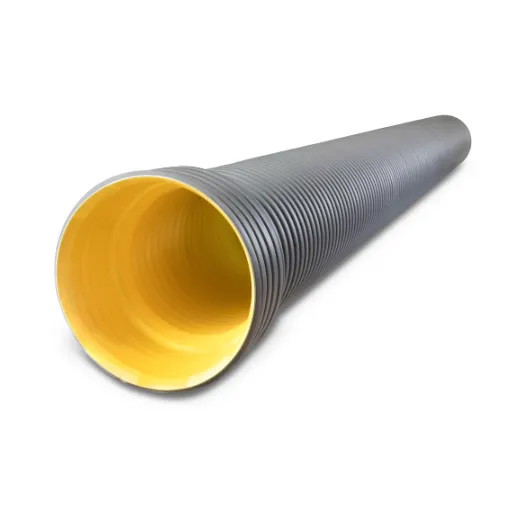High-Density Polyethylene (HDPE) culvert pipes have emerged as a vital component in modern infrastructure projects, offering a durable, cost-effective, and environmentally-friendly solution for a variety of drainage and water management applications. This comprehensive guide aims to provide a detailed exploration of HDPE culvert pipes, highlighting their composition, engineering advantages, installation procedures, and common applications across industries. We will also address key considerations such as environmental sustainability, load-bearing capacities, and long-term performance to give readers a holistic understanding of this highly adaptable piping solution.
What is an HDPE Culvert Pipe and How Does It Work?
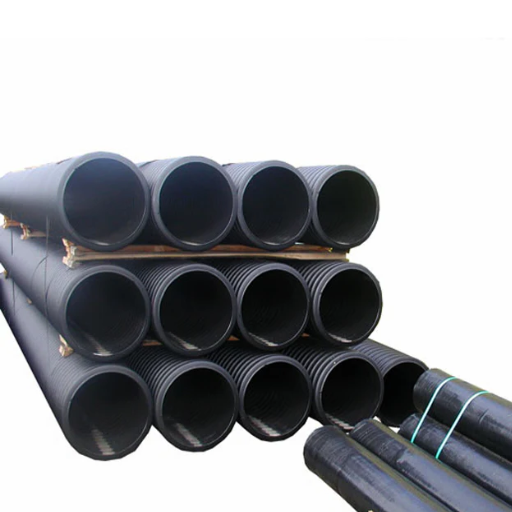
Understanding the Pipe Structure and Material
The High-Density Polyethylene (HDPE) culvert pipe is fabricated using a thermoplastic polymer that exhibits high strength-to-weight characteristics. Such pipes usually have a dual-wall structure, having a smooth inner wall for hydraulic flow and a dummy outer wall for strength and load bearing. This design prevents the pipe from collapsing under external forces while guaranteeing adequate flow within the pipe.
- Material Density: The density of HDPE ranges from 0.94 g/cm³ to 0.96 g/cm³, which ensures durability while making the material light-weight.
- Tensile Strength: The strength of the material is capable of withstanding mechanical stress in the range of 21 MPa and 37 MPa without changing shape.
- Flexural Modulus: The value of the Flexural Modulus can be as high as 600 MPa which helps the pipe resist bending moments when heavy loads are applied.
- Resistance to UV and Chemicals: HDPE have great resilience to UV radiation and various chemicals which ensures functional capability in different environments for a long time.
Given these specific features, the HDPE culvert pipes can perform optimally in fluid transfer operations that demand high intensity work including storm water Management, agricultural drainage, and roadway culverts.
The Role of Corrugation in Performance
The performance capabilities and structural robustness of HDPE Pipes are considerably supported by the pipes’ corrugations. The efficiency of load distribution on the pipe facilitates its’ stability under high weight loads, e.g. soilplus vehicular loads in buried locations. Also, the flexibility of the pipe is enhanced which allows the pipes to undergo minor ground movements while still maintaining integrity.
- Ring Stiffness (kN/m2): The intrinsic increased ring stiffness allows the pipe to resist deformation from external compressive forces thanks to increased stiff pipes.
- Flexural Modulus (MPa): The balance of rigid and flexible structural supported by the pipe is increased by the pipe’s flexibility with the adaptability of the pipe’s corrugated structure.
- Hydraulic Efficiency: The minimized frictional coefficients coupled with smooth inner linig of pipes leads to high flow rates and is sustained even under pressured environments.
Considering all the aspects, the design philosophy of the corrugation enables the HDPE pipes to satisfy the demanding conditions provided in the case of stormwater drainage and sub-surface flow systems which, require both stiffness and pliability.
Applications of HDPE in Various Industries
Superior structural properties and, more importantly, chemical resistance alongside prolonged longevity make HDPE suitable for use across a wide array of industries.
- Packaging: Strong chemical resistance as well as low density makes HDPE the go-to material for containers, bottles, and caps. Furthermore, the low moisture absorption rate (<0.01%) increases its usability in food and beverage packaging.
- Automotive: High impact strength, resistance to extreme temperate, hydrocarbons, and usage as fuel tanks and fluid containers makes HDPE ideal for protective barriers.
- Agriculture: The pipes and linings manufactured using HDPE are essential for irrigation systems. In addition, exceptional resistance to UV light and environmental stress ensures reliability in variable weather conditions.
- Construction and Infrastructure: The exceptional tensile strength and stress cracking resistance makes HDPE suited for the manufacture of drainage pipes, water supply systems, and gas pipelines. The aforementioned characteristics, along with low co efficient of friction, ensure durability even in hostile environments.
- Energy Sector: Its outstanding dielectric properties make HDPE suitable for insulation in power cables. The material also provides high-volume resistivity while guaranteeing good dielectric performance and safety, which makes it ideal for other electrical applications as well.
The adjustable factors like tensile strength (for example, 25-35 MPa), density (0.93-0.97 g/cm³), and chemical inertness confirm that HDPE is well suited for these industries.
How to Properly Install an HDPE Culvert Pipe?
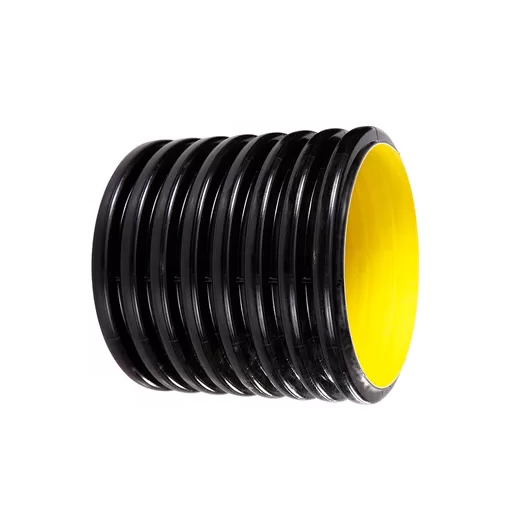
Essential Installation Tools and Accessories
To effectively put in an HDPE culvert pipe, I make certain that I have the following accessories and tools prepared ahead of time:
- Excavation and Levelling Tools: Tools like shovels, compactors, and excavators are needed to form the trench to the required depth and slope for the project.
- Measuring Instruments: These are laser levels or string lines which assist in alignment and also measuring the slope in which the water should flow towards.
- Pipe Cutting Tools: For cutting HDPE pipes, I use either mechanical saws or pipe cutters that are specially made for HDPE material to ensure that the end cut is clean and perpendicular to the length of the pipe.
- Fusion Equipment: I use fusion welding equipment that makes sure there is no leakage in joining the HDPE pipes. My fusion welder ensures there is a constant and adequate working temperature of 200-240°C which is the ideal temperature for welding HDPE.
- Compacted Base Material: To ensure the top surface is stable, crushed stone or gravel used has to be 0.75-1.5 inches in size and needs to be compacted to at least 90% of standard Proctor density.
- Anchoring and Stabilization Tools: Pipes have to be secured in place during installation to avoid movement, these tools include clamps or stakes that are used to stabilize the pipe during placement.
- Protective Gear: During the installation phase the risks may include cuts, impacts, or eye damage, so protective gloves, hard hats, and eye gear should be worn.
Every instrument and component has a specific function for the structural soundness and functional performance of the HDPE culvert pipe after installation while following procedural instructions and requirements.
Ensuring Water-tight Installation and Longevity
To achieve nearly leak-proof installation that maintains the functionality of HDPE culvert pipes long-term, there are some steps during and after the installation that should be followed:
- Joint Sealing: Joints have to be sealed properly to avoid water coming in or out. Gaskets should be used or thermal fusion welding should be done where it is possible and compliant with ASTM D3212 for watertight joint systems. When using gaskets, ensure that they are not damaged and are out in the correct position before the jointing process.
- Bedding and Backfill: The bedding material used should meet the set standard granular AASHTO M145 Classifications so it can properly support the rest of the structure. The backfill material needs at least 90-95 percent compact density of Standard Proctor Density (SPD) to be able to distribute loads evenly and be appropriately compacted.
- Inspection of Pipe Alignments: Each pipe has to be fitted according to the specified engineering designs. Failure to do this would perhaps affect system performance and make it lose structural integrity, and the ability to hold water. Level lasers or any other similar equipment or technology can be used to achieve precision during placement.
- Hydrostatic or Air Testing: Testing after installations are always a good idea to ensure water tight integrity. With pressure testing, HDPE pipe systems usually don’t differ from the norm where they are tested at one and a half times the nominal working pressure for at least two hours.
- Maintenance Planning: Create regular inspection schedules aimed at checking for possible joint separation, soil erosion, and debris accumulation. Regular cleaning and inspecting of the site will reduce the chances of long-term breakdowns in the system.
Following the above instructions along with and rationalized technical criteria, the installation is capable of achieving operational dependability and longevity throughout the entire service life.
Why Choose HDPE Culvert Pipes Over Other Materials?
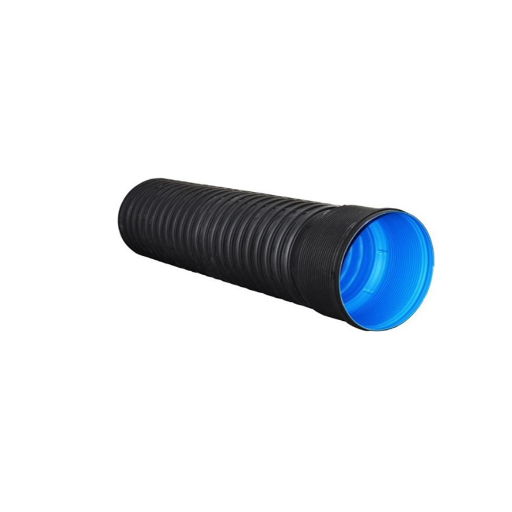
Comparison with Steel Culvert Options
When comparing HDPE pipes to steel fabrications for cables, steel pipes are bulkier, and more complex to install, and I’d be hard-pressed to claim they are cost-efficient. Furthermore, the ease with which HDPE pipes can be transported, makes their installation much easier and less time-consuming than steel pipes. This saves a lot on labor costs. The wires have an incredibly low resistance to corrosion and rust. In fact, in moist areas or ones with very acidic soil, where steel pipes are predominantly used, they would incur devastating costs by needing to coat the pipes with expensive protective paint or replacing the pipes constantly.
- Corrosion Resistance: HDPE is a non-oxidizing corrosion and material degrading substance like steel, so it does not react with salts, acid, and many chemicals.
- Flexural Strength: HDPE provides, extensive flexibility as well as, resistance to cracking while withstanding a lot of load over time, so they are less susceptible to breaking with shifting soil. Steel often suffers from warpage or buckling under all that intense stress.
- Service Life: Unlike steel pipes which constantly need maintenance due to environmental factors, HDPE pipes have a much greater life span, earning it a spot in the top tier bracket with its enormous 50 to 100-year lifespan.
- Cost Efficiency: HDPE pipes are economically cheaper by miles when taking into consideration the overall cost of materials and maintenance through time, unlike steel which requires metals.
In my view, combining all these factors such as ease of transportation, joint systems compatibility, and marked integration of these pragmatic advantages, makes the use of HDPE culvert pipes an excellent resoHdPEn pipes an excellent union for both small scale applications as well as large infrastructure projects.
Advantages of Corrugated HDPE in Drainage Systems
The benefits of using corrugated HDPE pipes in drainage systems stem from their excellent functioning and adaptability. To begin with, their light weight makes for easier movement and fitting, so less time and money is spent on labor. Additionally, their chemical resistance to corrosion and abrasion means that these pipes will last a long time, even in some of the most difficult settings. Adding to that, the flexibility of these pipes also allows them to endure ground shifting and seismic activity without losing their structural integrity.
- Density: Corrugated HDPE has a material density of approximately 0.941 to 0.965 g/cm³ making it light and flexible at the same time.
- Tensile Strength: The tensile strength of HDPE pipes ranges from 20 – 37 MPA which allows them to take pressure changes in the drainage systems.
- Chemical Resistance: HDPE undergoes very little change over the years, making it very resistant to acids, bases, and salts.
- Service Life: Corrugated HDPE pipes have an average lifespan of over 50 years, making them a good economically long-term option.
These factors prove the usefulness of HDPE pipes in residential buildings as well as large infrastructure systems. And are in combination with good economic value and good performance. I’d suggest the use of the pipes where reliability, low maintenance, and service life are priorities.
Corrosion Resistance and Durability Features
Corrugated HDPE pipes are designed to resist corrosion and remain in good structural condition for a long time. Their corrosion resistance is due to the fact that high density polyethylene has a high degree of inertness and is resistant to many chemicals, salts and the acidic matrices of waste water, storm water, and other adverse environments.
- Chemical Resistance: HDPE pipes can withstand extreme corrosive forces, and can tolerate very high and very low pH levels, between 1 and 14, as it does break down under industrial and environmental applications.
- Abrasion Resistance: Pipes are known to resist abrasion from sediment or other particulate matter carried in water to an extent that decreases their wear and tear over time.
- Ultraviolet Stability: The pipes performance and service life is prolonged from surface degradation by the material composition that includes UV inhibitors which block the sun from degrading the pipe over time.
- Structural Integrity: Flexibility along with impact resistance associated with the material enables HDPE pipes to endure external pressure, ground movements and aggressive environmental conditions without cracking or deformation.
These factors combine to confirm their usefulness in cases needing long-term dependability in harsh working conditions. Therefore, I suggest using corrugated HDPE pipes when there’s a need for resistance to corrosion, sturdiness, and little maintenance.
What Are the Product Details of HDPE Culvert Pipes?
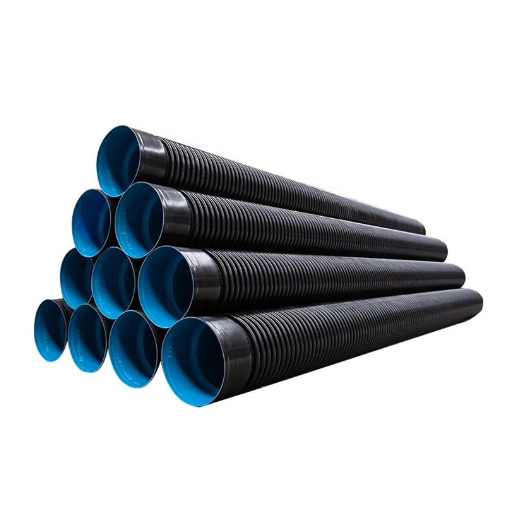
Specifications and Design Standards
- Diameter Range: Depending on the use and load requirements, HDPE culvert pipes are produced from 6-inch (150 mm) to 60-inch (1500 mm) diameter sizes.
- Load Rating: They have an excellent support structural capacity so that they may be rated with H-20 or H-25 vehicular loading as per AASHTO specifications.
- Wall Thickness: As is characteristic of dual wall pipes, the strength and durability are enhanced. The outer wall is corrugated for structural support while the inner wall is smooth to allow the free flow of water.
- Temperature Tolerance: These pipes can be operated in a temperature range of -40°F (-40°C) to 140°F (60°C), without material breakdown.
- Hydraulic Efficiency: The internal smoothness allows a Manning’s roughness coefficient of about 0.012 for the smooth interior which causes water to flow with little energy loss.
Complying with the industrial guidelines as well as employing stringent technical specifications increases the dependability of HDPE culverts on various infrastructures.
Available Sizes and Customization Options
HDPE culverts are produced in the most common forms unlike other projects that are more flexible in there range and scope. For ease of installation and transporting, the length for each piece is usually given in 20 foot sections, while the diameters typically exceed 4 to 60 inches (100 mm to 1500 mm).
- Custom Non-standard Diameters: Custom diameters need to be accommodated in case the infrastructure needs are more specific.
- Variable Lengths: The length of the pipes is highly versatile. Custom lengths can be issued to lower the number of joints that need to be installed per section supplied.
- Perforation Design: For some applications needing controlled exfiltration or infiltration, partial or full perforations are catered.
- Additive Materials: For even more durability in extreme settings, UV stabilizers and other additives can be used.
- Jointing Systems: For a given set of hydride and structural parameters, other methods of jointing such as gasketed connections, welded seams, and bell-and-spigot joints can start customization.
As in any custom project, the technical details such as wall thickness, material grade (PE80 or PE100), and load tolerances have to be set during the design stage to ensure standards and local regulations are met. These custom solutions are very helpful for improving installation efficiency and long-term efficiency.
How Does HDPE Culvert Pipe Performance Compare in Highway Drainage?
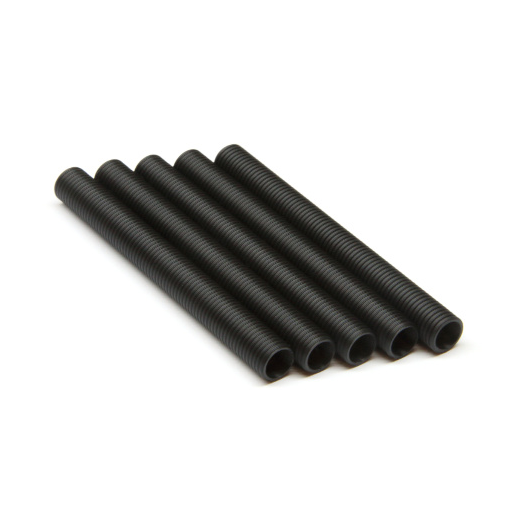
Ensuring Excellent Drainage System Performance
When evaluating the functionality of HDPE culvert pipes in the drainages of roads and highways, there are certain aspects that, when combined, guarantee the best practical performance. First of all, the abrasion, chemical, and UV resistance ensures that the pipe does not fail in extreme conditions. Also, the grade of the material, usually PE80 or PE100, along with the wall thickness determines the built-up strength of the pipe, as well as the load it is supposed to sustain, like the weight of soil above or traffic above it.
Moreover, the hydralic functioning of the pipe is remarkable, with the HDPE smooth inner wall providing an inner wall Manning’s roughness coefficient of 0.009. This not only allows for better flow but also reduces sedimentation. This is particularly beneficial in reducing the chances of clogging when there are high flows of storm water.
To allow for bespoke designs, I use methods of jointing, like gasketed joints or welded seams, that guarantee no leaks, even when the soil around them shifts or there is high pressure of groundwater on them. For some designs that need to either infiltrate or control the discharge, precise holes are made to ensure the needed drainage is achieved.
It is by following these defined technical constraints that the desired outcome from the use of HDPE culvert pipes in modern highway drainage systems is achieved.
Long-term Performance and Maintenance Requirements
The functionality and performance of HDPE culvert pipes in the long-term sense rely heavily on how well they perform over time and their ability to structurally and hydrologically sustain damage over time. The pipes display an exceptional ability to endure corrosive chemicals, environmental stress cracking, and abrasion which further enhances the durability of the pipes. Provided that the proper installation procedure is followed, these pipes can last upwards of 100 years depending on the surrounding environmental conditions and overall load.
- Inspections of structural integrity: Watch carefully for deformation, joint displacement, and stress concentration due to moving soil or outside forces. The usual limit on tolerable deflection is less than five percent of the pipe’s diameter.
- Monitoring the hydraulic: Determine the level of flow efficiency to find out whether there is sediment accumulation or blockage. The Manning’s roughness coefficient of 0.009 means there is little sediment accumulation, but for rough high-sediment zones, flushing is usually necessary.
- Assessment of joint performance: Make sure that gasket or welded joints are tight in places with high waterbed pressure. Examine them under hydrostatic pressure if suspecting joint failure.
- Check for the environmental effects: Check the amount of UV radiation above-ground applications are exposed to as well as chemical implementation in the industrial drainage system and assess whether or not it compromises the integrity of the material.
Following these maintenance routines alongside the advantages of HDPE materials guarantees the continued satisfactory functioning of culvert pipes during the duration of their service life. Also, the integration of predictive analytics in the monitoring process can improve the maintenance timetable which reduces overall costs while preventing unanticipated problems.
Reference sources
Frequently Asked Questions (FAQs)
Q: What are HDPE culvert pipes and their primary uses?
A: HDPE (High-Density Polyethylene) culvert pipes are lightweight, durable pipes primarily used for drainage applications and crossing. They are known for their resistance to corrosion and chemicals, making them ideal for a range of environmental conditions. These pipes provide superior service in various infrastructure projects.
Q: How does a dual-wall HDPE pipe differ from a single wall?
A: Dual wall HDPE pipes feature a smooth interior wall and a corrugated exterior. This design provides superior hydraulics and greater structural integrity compared to single wall pipes, making them suitable for more demanding drainage applications.
Q: What standards do HDPE culvert pipes comply with?
A: HDPE culvert pipes often comply with standards such as AASHTO M252 and M294. These standards ensure the pipes meet specific quality and performance criteria, making them approved for use in various construction projects.
Q: Can HDPE pipes be used in place of galvanized or concrete pipes?
A: Yes, HDPE pipes can be used as an alternative to galvanized or concrete pipes because they provide superior performance in terms of flexibility, durability, and resistance to corrosion, while also being easier to install and transport.
Q: How does the installation of HDPE culvert pipes work?
A: The installation of HDPE culvert pipes involves preparing a trench, laying out the pipes by the project specifications, and connecting them using bell and spigot joints or other approved connection methods. Proper backfilling and compaction are crucial to ensure the pipe provides optimal performance.
Q: What role does the corrugated pipe design play in HDPE culverts?
A: The corrugated design of HDPE culverts enhances their structural strength and flexibility. It allows the pipes to withstand external loads and ground movement, making them an excellent choice for various drainage applications and vehicle crossings.
Q: Are HDPE pipes environmentally friendly?
A: Yes, HDPE pipes are considered environmentally friendly as they are recyclable and require less energy to produce and transport compared to metal or concrete pipes. Their long lifespan and resistance to leaks and corrosion further reduce environmental impact.
Q: How do I ensure proper maintenance of HDPE culvert pipes?
A: Proper maintenance of HDPE culvert pipes involves regular inspections to check for blockages or damage. It’s important to clear any debris and ensure that the drainage system is functioning efficiently. Access to the pipes should be checked to avoid issues like access denied or permission to access problems.
Q: Are there any limitations to using HDPE pipes?
A: While HDPE pipes provide many advantages, they may not be suitable for extremely high-temperature applications or where very high pressure is required. It’s essential to evaluate specific project needs and consult product manuals to ensure the pipe is available and appropriate for the intended use.



